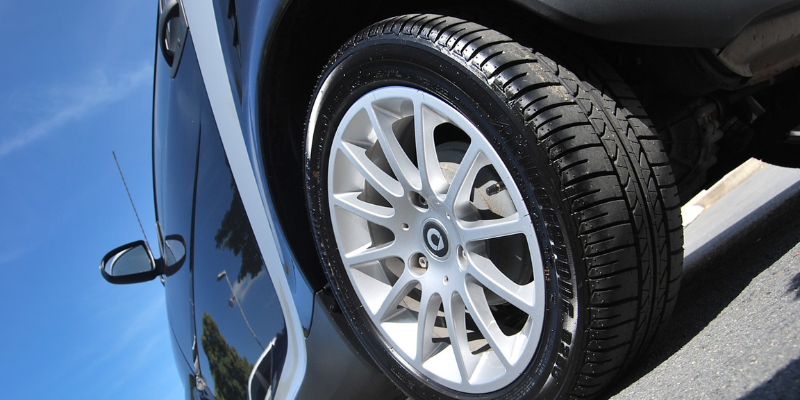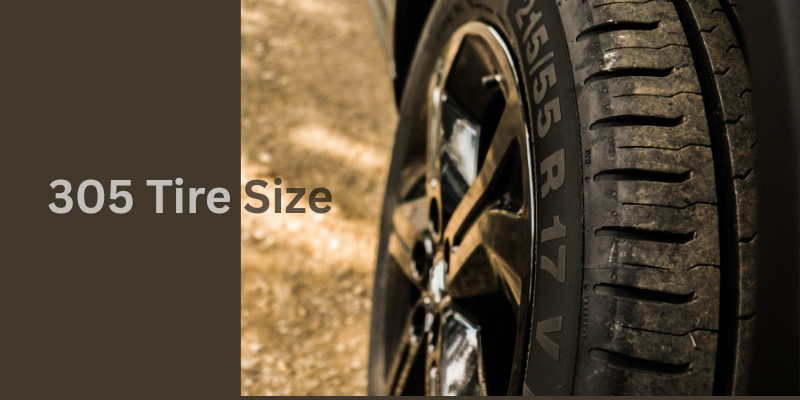When upgrading or customizing a vehicle, tire size plays a pivotal role in performance, aesthetics, and safety. Among the many options available, the 305 tire size has emerged as a popular choice among car enthusiasts, off-roaders, and tuners seeking a wider, aggressive stance and better traction. This comprehensive guide explores every detail of the 305 tire size, from measurements and applications to benefits and comparisons.
What Does 305 Tire Size Mean?
The number 305 in a tire size represents the tire’s width in millimeters from sidewall to sidewall. For example, a 305/55R20 tire means:
-
305 mm: Tire width
-
55: Aspect ratio, indicating the height of the sidewall is 55% of the tire’s width
-
R: Radial construction
-
20: Wheel diameter in inches
This size translates to a wide tire with a substantial contact patch, ideal for enhancing grip and improving stability, especially at high speeds or during off-road conditions.
Why Choose 305 Tires?
1. Enhanced Traction and Grip
305mm-wide tires provide a larger contact area with the road. This wider footprint significantly improves:
-
Acceleration performance
-
Cornering capabilities
-
Braking efficiency
Whether it’s track racing, drag strips, or trail crawling, these tires deliver exceptional grip.
2. Aggressive Aesthetic Appeal
Wider tires create a muscular and commanding stance. Whether mounted on a muscle car, SUV, or lifted truck, 305 tires provide an impressive visual upgrade that turns heads.
3. Increased Load Capacity
305 tires often come with higher load ratings, making them ideal for heavy-duty vehicles, towing setups, or off-road builds. Their robust sidewalls handle more weight without compromising safety or comfort.
Popular Vehicles That Use 305 Tires
305-sized tires are commonly found on:
-
Chevrolet Silverado & Tahoe
-
Ford F-150 & Raptor
-
Ram 1500 & Power Wagon
-
Jeep Wrangler (with modifications)
-
Dodge Challenger/Charger (performance variants)
-
Toyota Tundra & Sequoia
Some vehicles require lift kits or aftermarket wheels to accommodate 305 tires without rubbing.

Common 305 Tire Size Variants
Here are a few widely used 305 tire size formats:
| Tire Size | Approximate Diameter (in) | Ideal Wheel Width (in) | Use Case |
|---|---|---|---|
| 305/55R20 | ~33.2″ | 9.5″–11″ | Full-size trucks, off-road |
| 305/35R20 | ~28.4″ | 10″–12″ | Sports cars, performance sedans |
| 305/70R17 | ~33.8″ | 8.5″–10.5″ | Jeeps, off-road SUVs |
| 305/30R19 | ~26.2″ | 10.5″–12″ | Track vehicles, high-performance |
Note: Always verify wheel well clearance and suspension components before switching to a 305 size.
305 vs. 275 Tires: Key Differences
| Feature | 305 Tires | 275 Tires |
|---|---|---|
| Width | 305 mm | 275 mm |
| Contact Patch | Larger | Smaller |
| Performance | Better grip & traction | Slightly better fuel efficiency |
| Fuel Economy | Slightly reduced | Better |
| Appearance | Wider, aggressive look | More subtle |
| Price | Higher | Lower |
In summary, 305 tires excel in performance and aesthetics, while 275 tires offer better fuel economy and comfort for daily driving.
Do 305 Tires Affect Speedometer Accuracy?
Yes, changing to a different tire diameter can cause your speedometer and odometer readings to become inaccurate. For example, upgrading from a 275/55R20 to a 305/55R20 increases the diameter by about 0.8 inches, making your vehicle travel slightly faster than indicated.
Use a tire size calculator or consult a tire professional to determine:
-
Speed variance
-
Gear ratio impact
-
Required calibration
Can 305 Tires Fit on 10-Inch Wide Rims?
Absolutely. A 10-inch rim width is within the recommended range for most 305 tires. However:
-
For optimal tire bulge and road contact, 10.5″ to 11″ wheels are often preferred.
-
Overstretching or understretching can affect performance, wear, and safety.
Always refer to the tire manufacturer’s rim width range.
Tire Brands That Offer 305 Sizes
Many reputable brands manufacture tires in the 305 range. Popular models include:
-
Nitto Terra Grappler G2
-
Toyo Open Country A/T III
-
Michelin Pilot Sport 4S
-
BFGoodrich All-Terrain T/A KO2
-
Goodyear Eagle F1 Asymmetric
Choose the tire based on your driving needs, such as all-season, off-road, or performance driving.
What is the Largest Tire Size Without a Lift?
On most trucks and SUVs, a 305 tire will require minimal to moderate modifications, such as:
-
Leveling kits
-
Fender trimming
-
Wheel spacers
For example:
-
Ford F-150 (stock): Max tire size ~33″
-
With 2.5” leveling kit: Can fit up to 305/55R20 comfortably
Always consider offset, backspacing, and suspension travel when upgrading tire size.

Is a 305 Tire Good for Off-Roading?
Absolutely. Off-roaders love 305 tires because of:
-
Wider footprint for rock crawling and sand
-
Enhanced flotation over mud and snow
-
Durable sidewalls for rugged terrain
Look for tires with 3-ply sidewalls, aggressive tread, and high ply ratings if off-roading is your priority.
Fuel Economy Impact of 305 Tires
Larger tires like the 305 size do increase rotational mass and rolling resistance, leading to:
-
Reduced MPG
-
Heavier steering feel
-
Slower acceleration
To mitigate this, opt for lightweight wheels, regear your differential, or use low-resistance all-terrain tires.
305 Tire Size Conversion to Inches
To convert tire size to inches, use this formula:
Total Diameter (in) = [(Aspect Ratio ÷ 100) × Section Width × 2 ÷ 25.4] + Wheel Diamet
erExample: 305/55R20
= [(0.55 × 305 × 2) ÷ 25.4] + 20
= [335.5 ÷ 25.4] + 20
= 13.21 + 20 = ~33.21 inches
So, the 305/55R20 tire is approximately 33.2 inches in diameter.
Conclusion: Should You Get 305 Tires?
If you’re aiming for maximum traction, aggressive appearance, off-road capability, or track-ready handling, 305 tire sizes are an exceptional upgrade. They offer substantial performance benefits, especially when paired with the right vehicle and wheel setup.
Ensure that your suspension, wheels, and fenders can accommodate the change, and always consult with a tire specialist or use a fitment calculator before making your final purchase.


